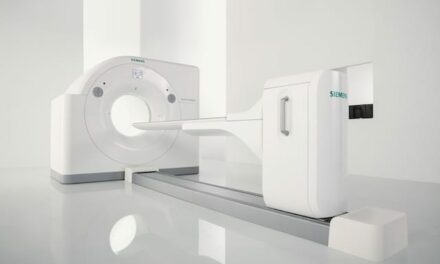Washington University School of Medicine’s Barnes-Jewish Hospital, based in St Louis, has installed GE Healthcare’s Discovery NM/CT 670 CZT SPECT/CT system—the first SPECT/CT scanner equipped with cadmium zinc telluride (CZT) technology. This technology, which enables photons to directly convert to digital signals, was previously limited to organ-dedicated devices. The Discovery NM/CT 670 CZT, however, allows physicians to perform whole-body exams.
CZT technology improves spatial and contrast resolution—which, in turn, enables physicians to detect smaller lesions and quantify them more accurately. Plus, having the ability to complete multiple scans in a single visit and reduce the dose injected by 50% improves patient experience, GE officials say. With the Discovery NM/CT 670 CZT, clinicians can simultaneously visualize and analyze numerous physiological processes in a patient, gaining insights into multiple dimensions of the patient’s anatomy and physiology at the same time.
Barry Siegel, MD, division director of nuclear medicine at Mallinckrodt Institute of Radiology at Washington University, says he believes GE Healthcare’s new system will increase the utility of the SPECT/CT modality. “We will also look to see how we can reduce scan time, lower dose, or both, while maintaining image quality,” Siegel says, adding that he anticipates researching SPECT/CT quantification. After all, he says, “accurate and reproducible quantification will be increasingly important in nuclear medicine.”
GE Healthcare’s general manager of nuclear medicine Nathan Hermony agrees, praising the system for advancing the SPECT/CT field. “We believe this new technology will significantly improve the way exams are performed today and enable new areas of exploration for researchers who are looking at ways to optimize imaging protocols and gain additional insights about patients’ condition,” he adds.
For more information about this scanner, visit GE Healthcare.



